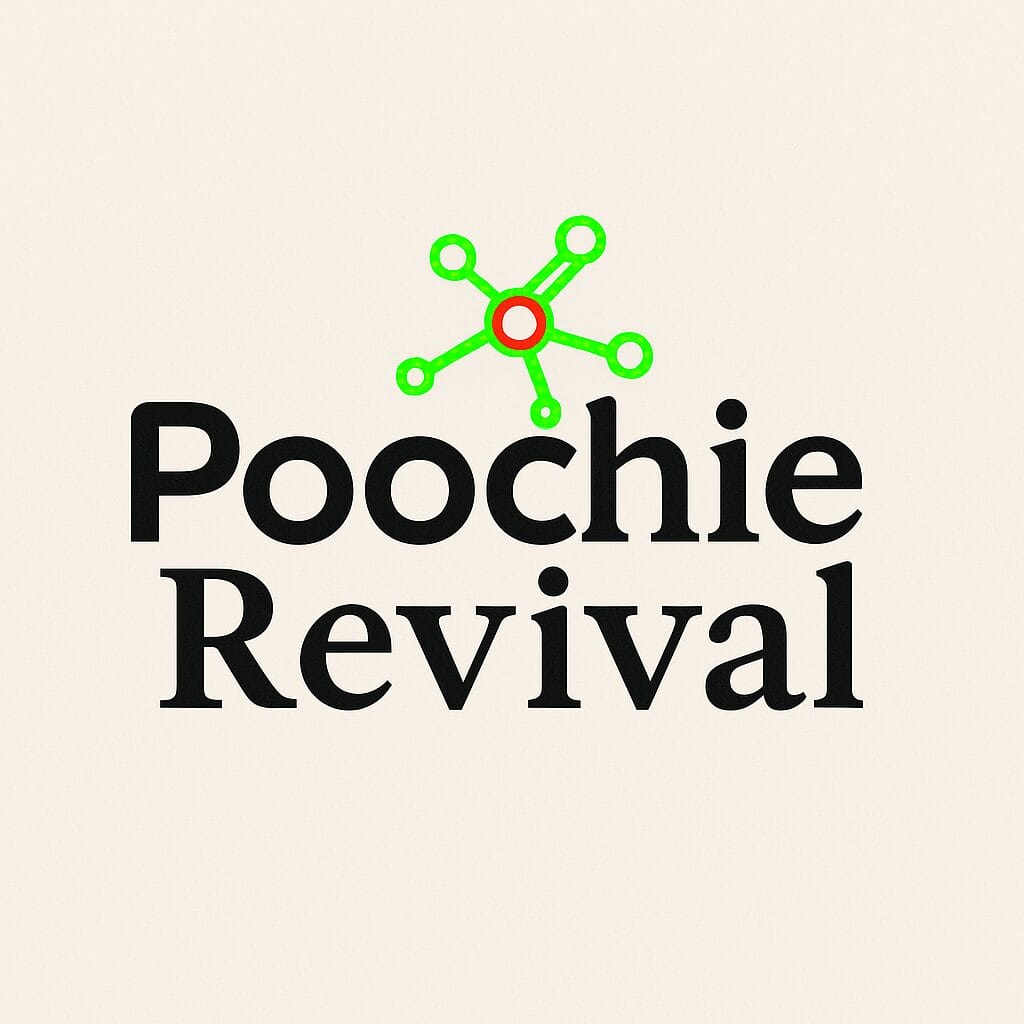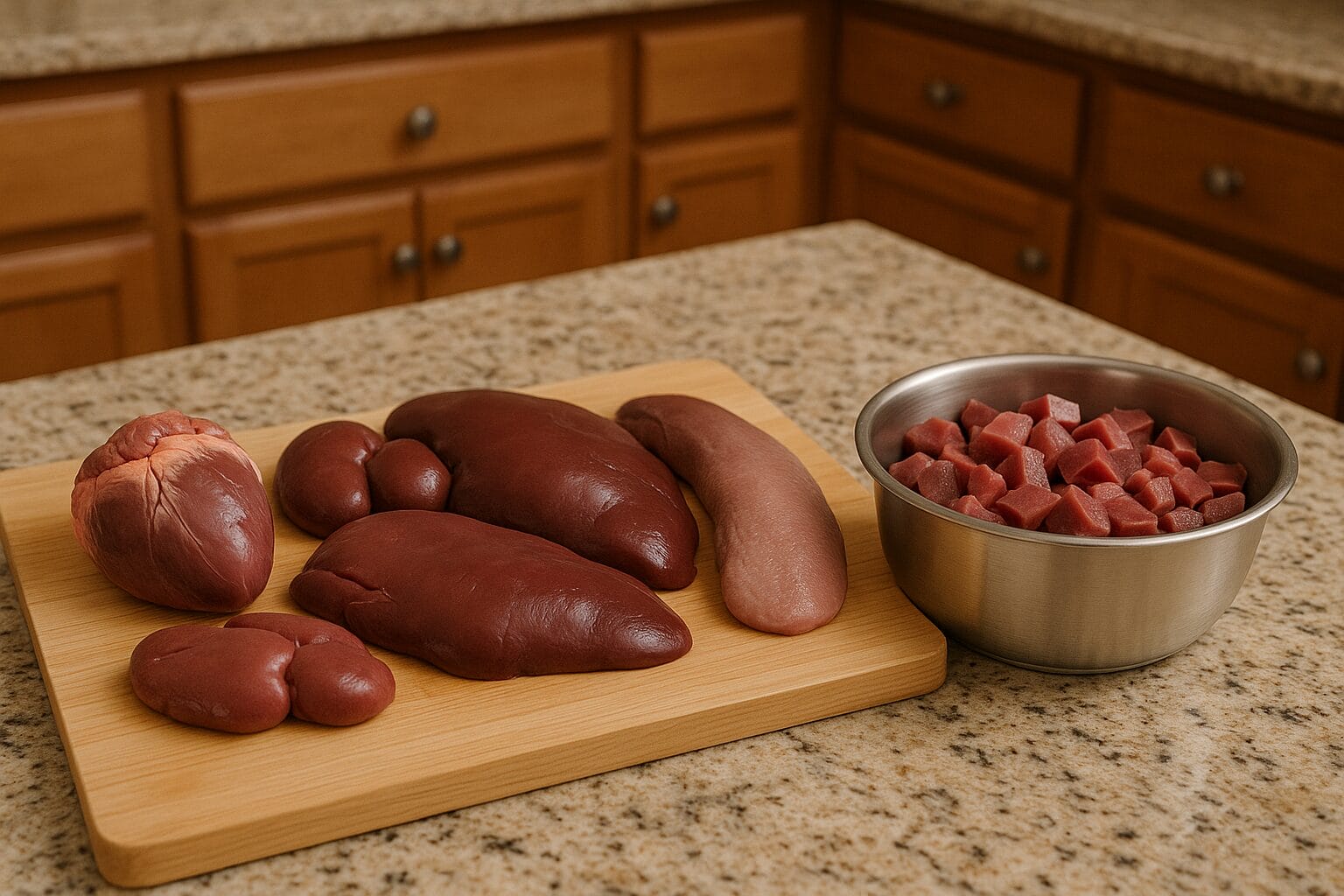In feeding dogs, organs play an important role alongside meat. This doesn’t even depend on the feeding method, as organs are visible in both dry foods and meat-based raw feeding, at least in advertisements. Still, it’s not always clear what the term “organ” actually means.
The definition of an organ varies significantly depending on the context in which the name is used. If you ask an anatomy department, you’ll get a completely different answer than from someone involved in feeding.
Even in dog feeding, “organ” doesn’t always mean the same thing. If it’s a so-called proper raw feeding (which unfortunately only means Finnish nutrition science-based meat feeding), then organs are a much narrower concept than if you ask the same from someone who feeds based on the barf model – yes, natural and live feeding, prey model (whole prey means the same, even though enthusiasts argue among themselves) and 80-10-5-5 are all old barf in a new guise.
Butchers also want to use the term “organ” in a very broad and loose sense because it provides tasty advertising claims and allows almost anything to be ground in.
In North America, organs are always used in a broad sense, regardless of context. But even there, meat is now called protein – which of course excites the domestic pulled oats/bean scene, as they too like to call their vegan alternative protein. The fact that in both cases, protein is often the least present doesn’t bother anyone.
But it’s not advisable to mimic Americans in almost anything, and there, veterinarians have also started preaching about the health benefits of bone/broth – which it doesn’t have, nor does it have nutritional benefits. As a result, bones and cartilage have also begun to be called organs.
Defining an Organ
What is called – or wants to be called an organ depends – or should depend – on the context. What is intended to be described or what is intended to be achieved. Because the boundary is so vague, one can never be completely sure what the words mean by organs at any given time.
Biology
In biology, an organ is any part or system of the body that performs a specific function. Simple, right?
Then digestion is an organ. Likewise, the circulatory system. Under that definition, the muscular system is also an organ, as is the skeletal system.
If digestion is considered one organ, then the same package includes teeth, saliva secretion (although saliva doesn’t do much in dogs, except facilitate swallowing), the stomach, pancreas, gallbladder, liver, and intestines.
We’re at a point where anything can be called an organ because it belongs to a larger, specific system. Really. There aren’t many unnecessary things in the body; everything has a role in some larger system – the coccyx in humans and the appendix in non-vegans are now unnecessary,
A more common way is to separate different parts and call them organs separately, but not the muscular and skeletal systems. Then, the brain, thyroid gland, thymus, liver, pancreas, heart, lungs, testes/uterus/ovaries, etc., are covered as organs. Now we’re approaching a more controlled classification of organs.
One way to make a distinction has been to state that an organ is located inside the body. That might sound like nitpicking (which I think it is), but I’ve been present when two representatives of veterinary medicine had a heated argument about whether the skin can be counted as an organ, or if it’s its own organ, and whether the intestines and bladder are considered organs because they have openings to the body without skin. Yes, alcohol played a part.
Metabolism
Sometimes only those that do something more than just work are counted as organs. The heart does muscle work and doesn’t differ much from a thigh muscle – except that the heart resting would cause fairly rapid death. Still, it doesn’t do anything other than work.
For example, the liver, kidneys, or pancreas do not do moving work. They transform substances into something else, store something, or secrete hormones and enzymes.
Now organs have been limited more, but still, there are question marks like the lungs, stomach, and intestines. Of course, they also do work, the intestines and stomach on their own and the lungs with the help of the diaphragm, but they relate to a purpose. The stomach churns and kneads like an internal electric mixer, the intestines squeeze food forward on its way to becoming feces while leaking nutrients into the body, and the lungs are bellows with an internal air filter.
The work itself is not their main function, like the heart. But they don’t primarily secrete or produce anything either (the intestines are a slight exception), but are pathways for things done by others. As mentioned, the boundary is never clear-cut.
The Task Determines
Some fear giving bones to their dogs because they break and splinter in different ways. Some are hard and break into small pieces. Some are flexible and break into long splinters. Still, they are always bones, and although there are small differences in, for example, mineral content, they are essentially always the same. Their differences to the eater come from their other chemical structure, which depends on what they were created for. We talk about the function of bones in their work.
The femur must withstand heavy stress. That’s why it’s hard and breaks into small pieces. The ribs protect the lungs and heart and help in the movement of the lungs. That’s why the thoracic spine and ribs must be flexible. They have a lamellar structure. A bit like how a fence post shouldn’t bend, but a bow must bend. Although both are wood, their different structures allow for different things, and that’s why they also break differently.
Muscle can only contract. It doesn’t do anything else. It can’t even straighten to its full length without outside help. Either the tendons, which are rubber bands and can only contract, or the opposing muscle, which contracts in the opposite direction, does the straightening. It’s never really an either/or situation, but it’s always about the cooperation of tendons and muscles.
What we think of as movement and muscle work is really nothing more than a bunch of rubber bands stretching or contracting alternately in different directions.
The difference in muscles as meat comes from the type of work they do. In practice, it’s about quite small differences, except for one thing that is often considered when feeding: how much fat is involved. If a muscle has to do hard and continuous work, it has more fat. If the stress is of a different type, it has less fat.
With organs, it’s a similar thing. Structurally, they are all similar and correspond to lean meat. They are not used as meat, though. The real work and significance of organs for the body, their function, is what determines why a particular organ is eaten.
The liver transforms substances into something else. That’s why it has so many B vitamins and trace elements. Either they are needed to help in the process itself, or they are ready waiting for use. The liver doesn’t store vitamin A for fun. The liver is the organ that converts vitamin A into different retinols according to what is needed where. The liver’s vitamin A stores are just an interim storage of the production line.
The testes have more zinc than others. It doesn’t flow there because zinc is heavy, but because the testes need zinc to produce sperm.
The kidneys have a lot of sodium and selenium. This is because the kidneys are a recycling center. Of course, the kidneys’ task is to filter and remove harmful things, but the kidneys’ main task is to collect and return things to the body. For this, the kidney tissues have relatively more minerals than others – except for the liver, which needs everything in abundance because it does everything.
For the same reason, some things considered organs are worthless as food. The lungs are like a thin sponge, and since they don’t store anything themselves but are a permeable filter membrane like coffee filter paper, there is nothing valuable in lung tissues. The same goes for the stomach, which is just thin and so tough that it doesn’t even digest properly.
The nutritional value of food depends on what the raw material originally did in the body (or plant).
Organs as Food
Especially Americans divide organs into two groups.
- muscle organs that do work; heart, gizzard, etc.
- glandular organs that secrete something; liver, kidneys, pancreas, etc.
In American barf copies, it’s extremely important that both types of organs are in the food. No one really understands why. The gizzard and heart are just meat. They don’t provide anything that meat doesn’t. There is no reason why they should be given separately.
In the case of actual organs, there are differences in the amounts of nutrients. The American-based barf world calculates the amount of organs as one big percentage lump based on the dog’s weight as a percentage of the food amount.
The local nutrition-based raw feeding calculates organs separately according to the dog’s needs based on a certain intake.
If you intend, for some incomprehensible reason, to use the American barf setup, you should master percentage calculations. Finnish-European raw feeding manages with multiplication.
- A 30 kg dog would need 600 grams of any food in the American way (the same amount with 4% fat chicken breast as with overly fatty ham). Of that, 30 grams should be liver and/or kidneys. If even half were liver, it would be 15 grams every single day, and the same amount of kidneys.
- A 30 kg dog would need amount X of food in the local raw feeding, and the grams and amount of fat depend on the dog’s weight. Liver would be given according to the vitamin A requirement, 7 grams per day, and possibly kidneys through selenium, 60 grams per day.
As you can see, the amounts – and the reasons for the amounts – are very different.
In raw feeding, organs are practically
- liver; at least 0.2 g/kgBW/day or 1.5 g/kgBW/week through vitamin A
- kidneys (not mandatory); 2 g/kgBW for 50% selenium intake, or 5 g/kgBW for 100% intake
- pancreas as an enzyme supplement, usually not used in normal feeding
- testes, brains, or thyroid are not used as food in Finland
All other foods, called organs by others, are meat.





